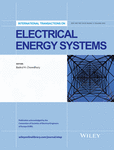Design, analysis, and implementation of extra low air-gap single-phase axial-flux induction motors for low-cost applications
Summary
In this paper, design and prototyping of two-speed capacitor-run single-phase axial-flux induction motor (AFIM) for direct-drive applications is presented. The proposed structure has single stator-single rotor configuration with high magnetic pull between the stator and rotor, which may compel rotor to lock. Although the most efficient method to overcome this problem is using a second rotor or stator in the mirror with the first one, it is not applicable in low-cost applications. So, in this paper, two new and fast construction techniques are proposed to fabricate an AFIM with extra low air-gap length and minimum cost. Beside design and optimization process, a thermal equivalent circuit considering radial and lateral heat transfers is proposed. Then different losses and thermal resistances are exactly calculated to estimate the temperature rise of different motor parts and the maximum specific magnetic and electric loadings. Then, motor performance is evaluated using three-dimensional time-stepping finite-element analysis. Finally, a comprehensive fabrication algorithm for AFIMs is presented, and a prototype of the studied motor is fabricated and tested. The experimental results validate the design, optimization, thermal model, and finite element simulations. Copyright © 2016 John Wiley & Sons, Ltd.




